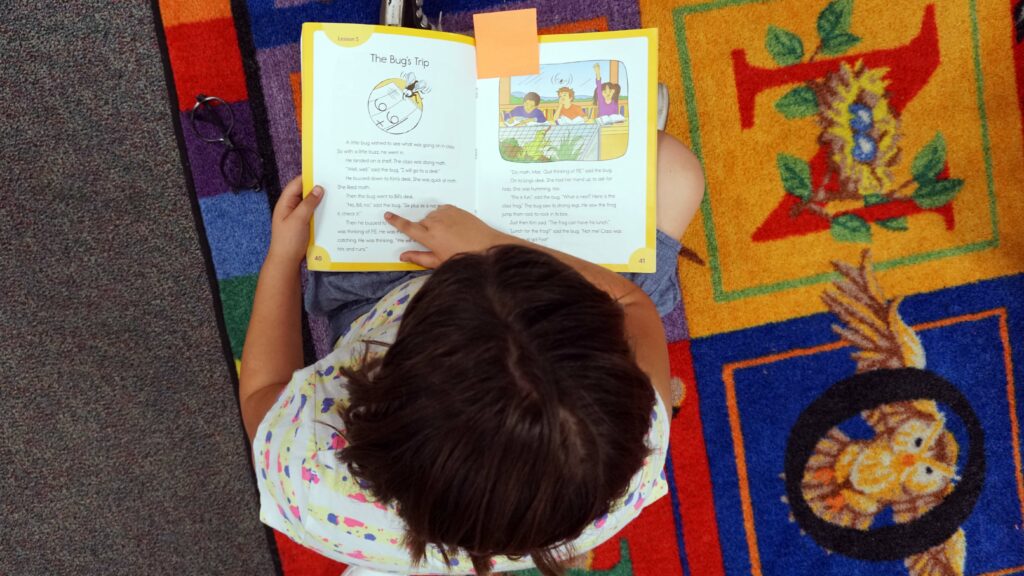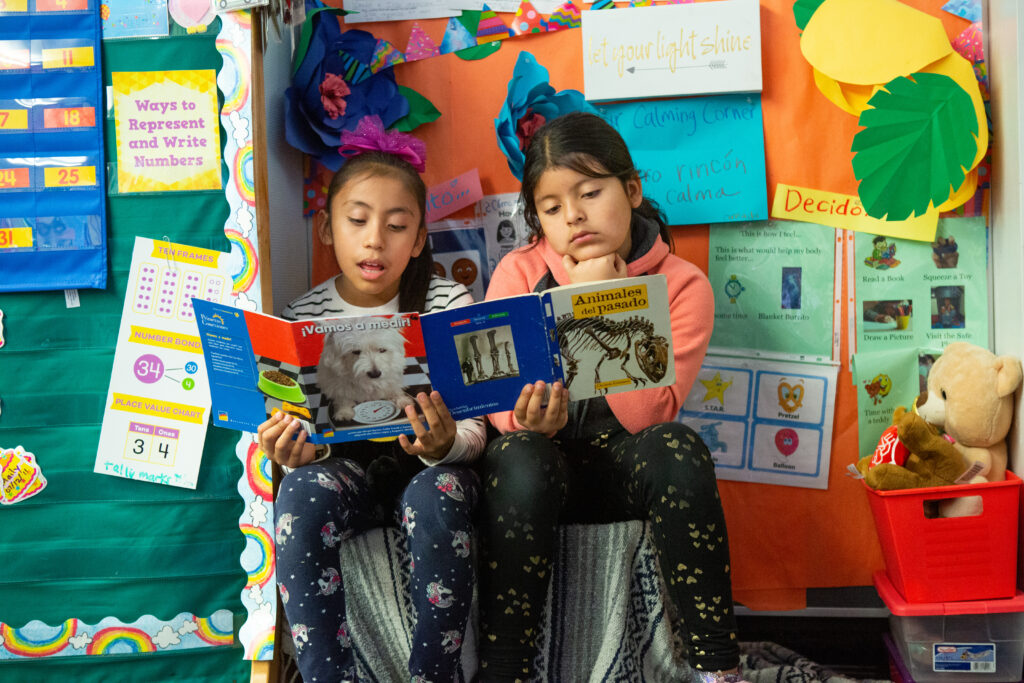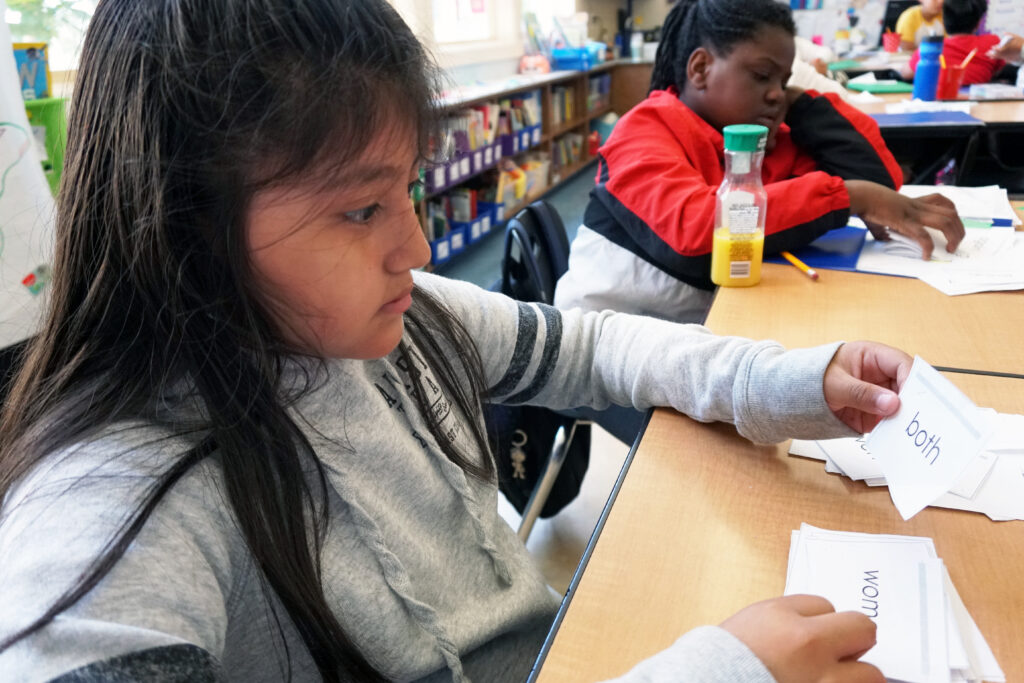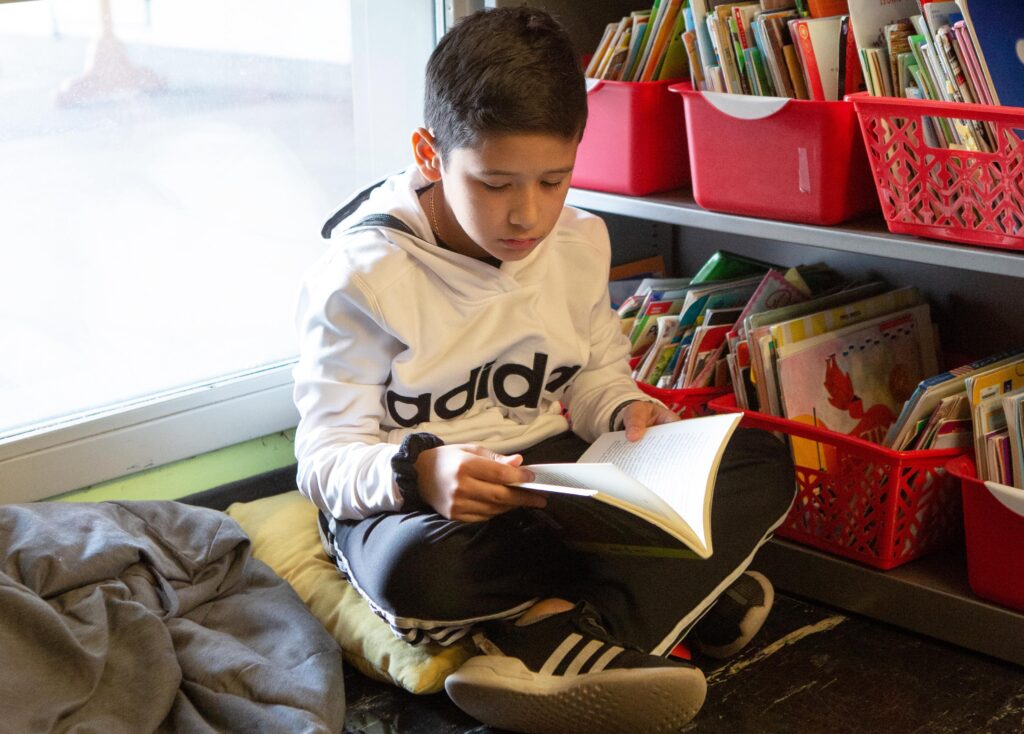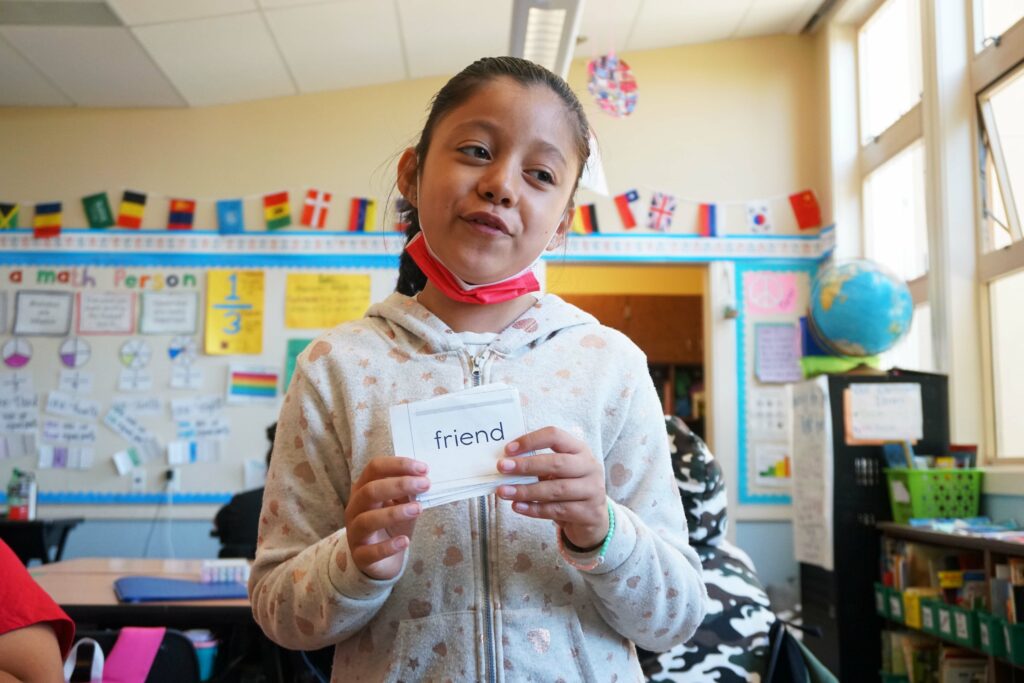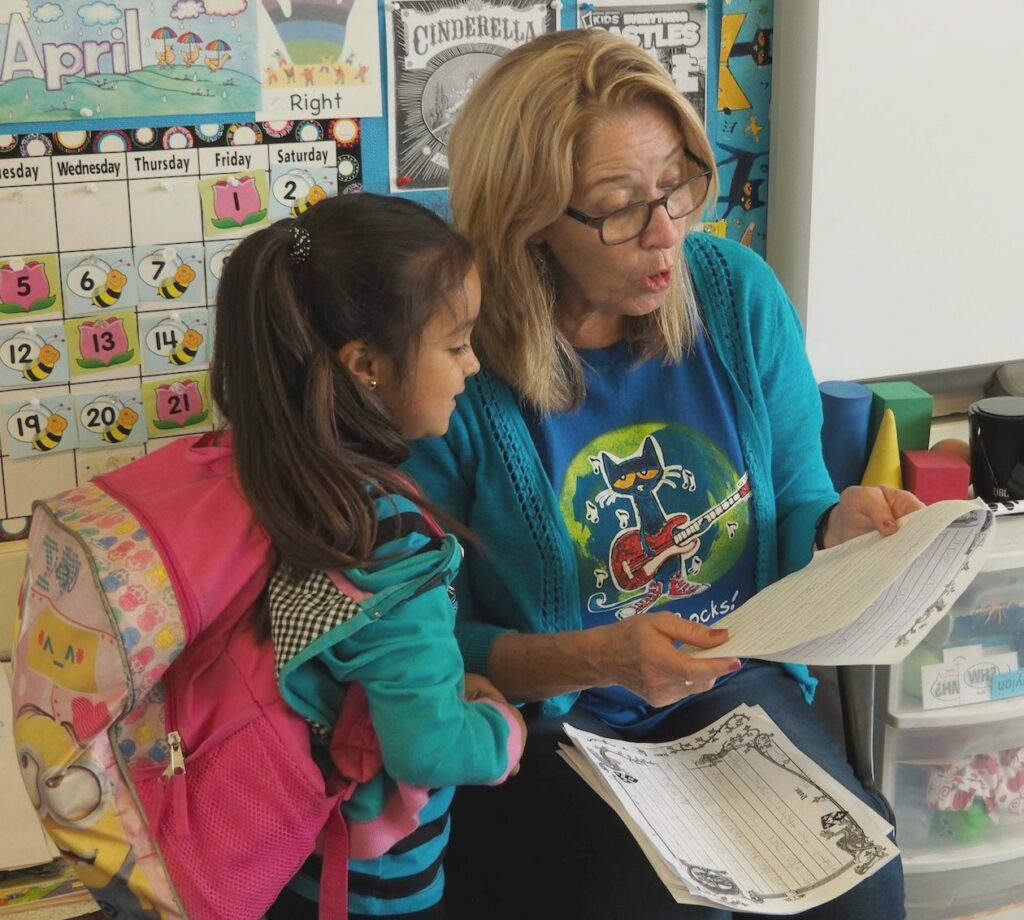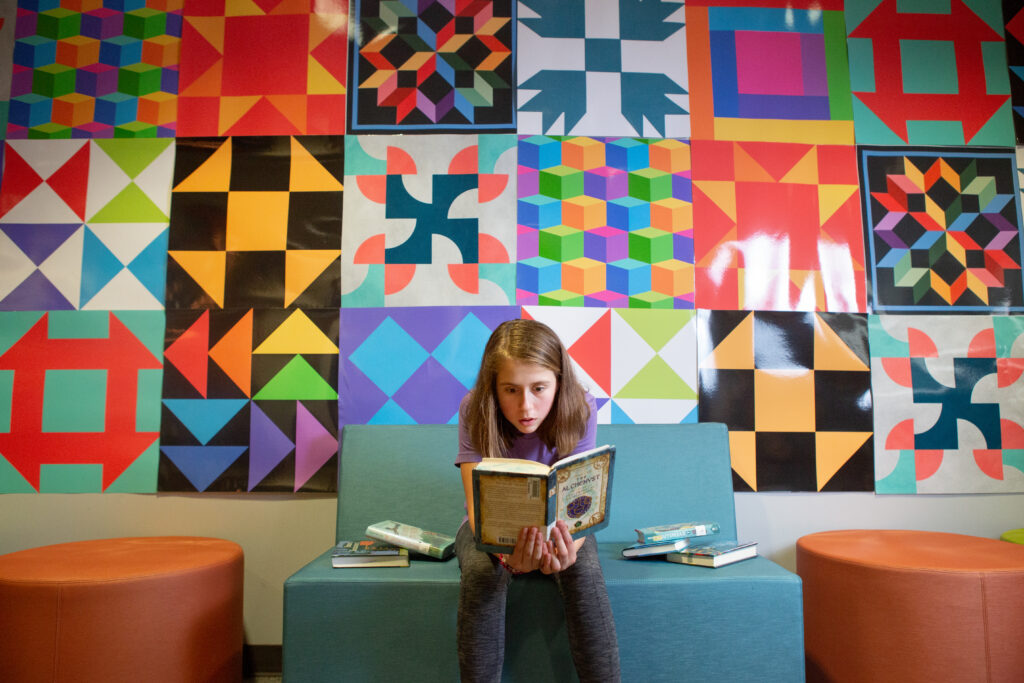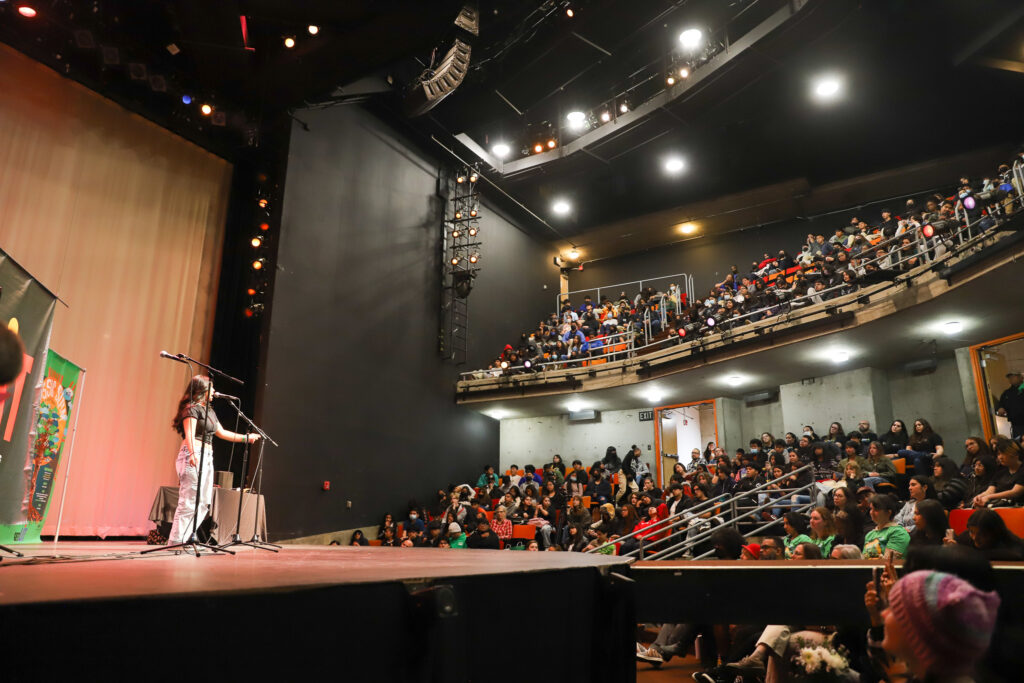
Credit: Andrew Reed / EdSource
Palo Alto Unified sorely needed to improve.
Despite ample resources and a reputation as one of California’s top districts, we were dramatically failing high-need students in education’s most fundamental subject: reading. For me, as a school board member, that was a tough pill to swallow.
But we have started to turn around our long-term problem as borne out by the results for our district on the state’s CAASPP/Smarter Balanced tests. Our students and teachers raised third grade reading scores for underserved groups from among the worst in the state to one of the best.
Even better, any district can follow the approach we used; it did not rely on big spending or complicated new programs. Early literacy is a “solvable crisis” for California’s schools.
Like most districts in California, we were struggling to teach reading to low-income and historically marginalized students. For low-income Latino third graders, 80% were below grade level, which ranked us near the bottom of all California districts.
This was a shocking realization for a district that thinks of itself as No. 1. It almost certainly meant that we were failing many other students, too, though some were being saved by a safety net of well-educated parents and out-of-school support.
The superintendent and his team decided to go “all-in” on improving early literacy. Instead of piecemeal changes, they put together a comprehensive reworking of our approach to early literacy, called the Every Student Reads Initiative.
Starting in 2021, this initiative has impacted almost every aspect of Palo Alto’s early literacy program, from teacher development and instructional materials to district administration and leadership:
Teacher training
- The district uses the Orton-Gillingham (O-G) training, a leading method for teaching reading foundational skills, for all K-three teachers, reading specialists, and all elementary principals.
- Reading-focused optional after-school workshops are available for TK-five teachers and elementary specialists.
- Teachers receive curriculum and assessment-specific training.
Coaching and on-the-job support
- The district provides ongoing support to teachers with implementation of the new curriculum.
- There is now a repository of high-quality resources for teachers on reading instruction including instructional materials and videos.
- The team leading the initiative has weekly communication with elementary educators.
Reading curriculum and interventions
- The Lucy Calkins’ Units of Study, criticized for lack of foundational skills, has been replaced by the widely used Benchmark Advance/Adelante plus O-G foundational skills and “decodable” texts.
- Schools offer targeted interventions for students who need additional support focused on phonemic awareness and phonics.
Reading assessment
- The Fountas & Pinnell BAS, a teacher-administered “running records” assessment, has been replaced by the computer-based and nationally normed iReady Reading Assessment.
- Staff conduct continued universal dyslexia screening in grades K-three using the iReady assessment.
District leadership
- The district appointed our first-ever literacy director, a respected elementary principal with expertise in reading.
- School administrators participate in monthly Elementary Principal Learning Collaborative meetings dedicated to pre-K-to-five reading instruction and supporting teachers with the implementation of curricular and assessment changes.
School board
- The school board has established multiyear improvement goals for third-grade student achievement, specifically focused on lower-performing student groups, to be included in the superintendent’s annual review.
- District staff provides updates to the school board at least three times per year.
While phonics was an important part of the initiative, our Every Student Reads Initiative is not a “phonics first” or “phonics only” approach — far from it. In every grade, it includes all the major pillars of reading from the National Reading Panel (comprehension, vocabulary, fluency, phonics and phonemic awareness).
District leaders made implementation of the Every Student Reads program a top priority; this was key. Early literacy was one of just five major district goals, called the Palo Alto Promise, and the only goal explicitly focused on student achievement. It has remained one of our top goals for the last three years.
Equally important was our superintendent’s outspoken personal leadership on the issue. He constantly talked about the initiative with parents, teachers and his own leadership team. His community messages included frequent updates throughout the year. And our school board was given formal updates three times a year, including a detailed readout of annual results versus goals. There was no doubt: Every Student Reads was a big deal for Palo Alto Unified.
The results so far have been impressive. Over two years, we’ve seen significant improvement on the state’s CAASPP/Smarter Balanced assessments across all the targeted groups compared with 2019, despite the headwinds from the pandemic. The bellwether low-income Latino third-graders have gone from 20% reading at or above grade level to 47% — one of the top results in the state.

Credit: Todd Collins
Percent of third grade students meeting or exceeding standards on the state’s CAASPP/Smarter Balanced assessments. Statewide results for 2022-23 have not yet been released.
In fact, nearly all groups saw double-digit growth last year. The share of third-grade English learners reclassified to English proficient reached its highest level in at least the last 10 years. And last year’s third graders have held onto their gains in fourth grade.

Credit: Todd Collins
Percent of third-grade students meeting or exceeding standards on the state’s CAASPP / Smarter Balanced assessments. Statewide results for 2022-23 have not yet been released.
Palo Alto is an outlier in some ways, with above average funding and relatively few high-need students (about 17%). But the Every Student Reads approach isn’t just for outliers; it did not rely on big spending or complicated new programs.
Instead, it focused on doing the fundamentals well: an “all-in” commitment, strongly backed by senior leadership, coupled with an array of supports to help teachers build their knowledge and refine their practice in teaching reading. Any district can do what we did.
California faces an early literacy crisis. Just 42% of all third-graders are at grade level for reading. For low-income Black and Latino students, the number plummets to 25%. Our history of struggle in Palo Alto mirrors a broader failure across the state to recognize and address this crisis. While some schools have managed to buck the trend, most face challenges similar to ours.
But we can change this. School boards, superintendents, and district leaders have the power to address this “solvable crisis.” By going “all-in” on early literacy, districts all over California can move the needle for students who rely on school the most. Every Student Reads should be at the top of every California district’s priority list.
•••
Todd Collins is a member of the Palo Alto Unified School District Board.
The opinions expressed in this commentary represent those of the author. EdSource welcomes commentaries representing diverse points of view. If you would like to submit a commentary, please review our guidelines and contact us.
